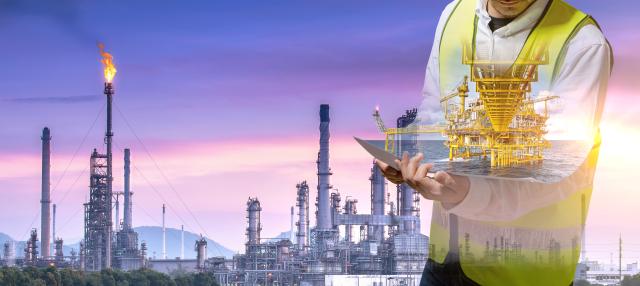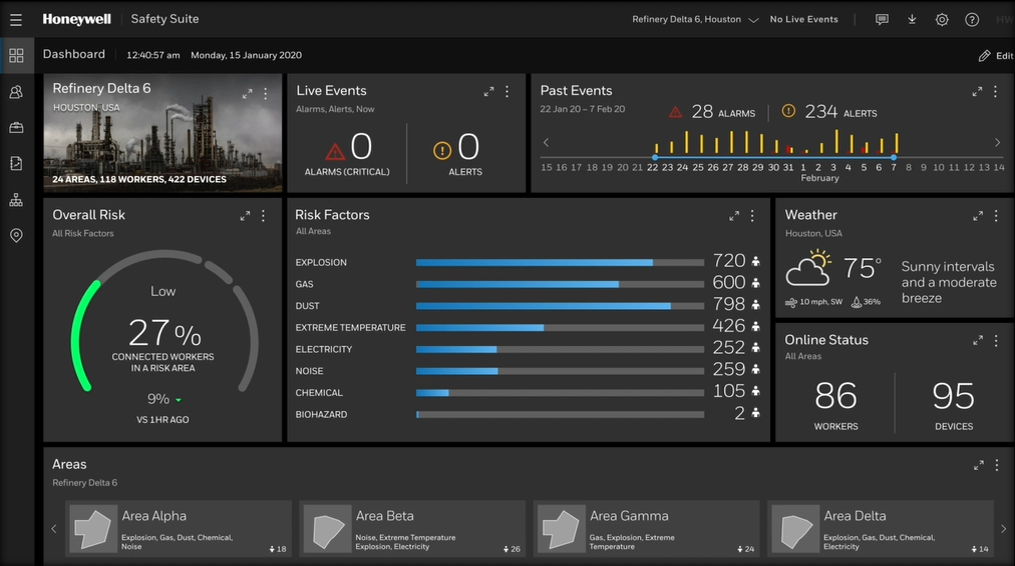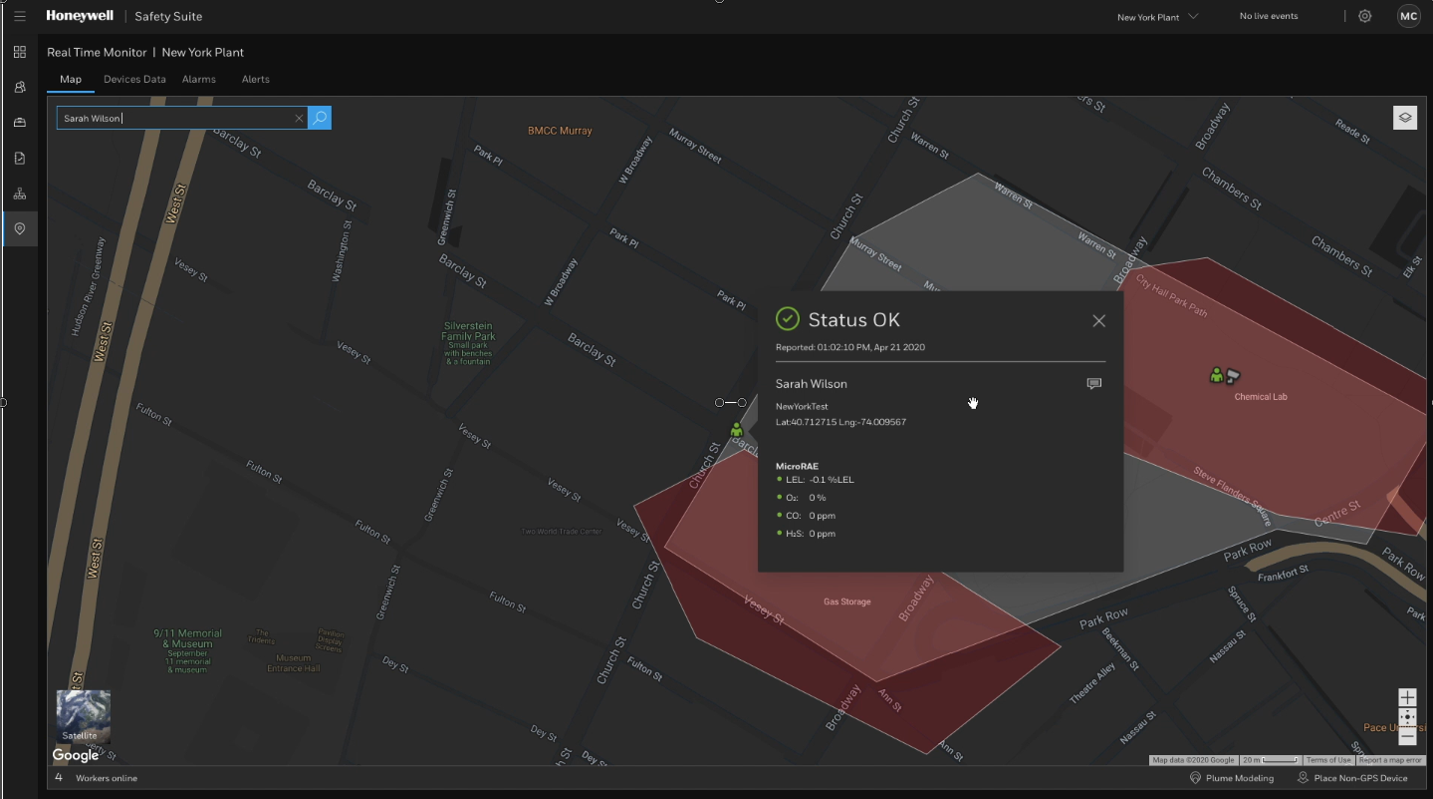
(Source: Shutterstock.com)
[Editor's note: This article originally appeared in the November issue of E&P Plus. Subscribe to the digital publication here.]
The oil and gas industry’s safety culture will always be an area worth improving, no matter the market or a company’s financial standing. For many, an automated safety management solution is essential to meeting compliance requirements.
Honeywell has been at the forefront of developing applications that maintain compliance and recently added its cloud-based Safety Suite Real Time platform to its portfolio. The software application monitors workers’ exposure to gas, weather and physiological conditions in real time, according to Chris Tipton, Honeywell’s senior director of global services and connected safety.

The open platform provides a comprehensive view of safety data from multiple sites in real time, which enhances worker readiness while reducing incidents through early detection notifications. The insights from the technology help operators reduce compliance costs, streamline management tasks and capture data to review to prevent future incidents, Tipton said.
“When we created Safety Suite, it was built upon our safety history and the evolving requirements of our customers,” he said. “We created differentiating features and capabilities to help the safety managers know and report what safety compliance measures are being applied. Additionally, Safety Suite enables our customers to react immediately to situations if there is an incident and take action.”
During a recent interview with E&P Plus, Tipton discussed the company’s latest safety platform and shared his insights on measures critical to the continued protection of oil and gas workers.
E&P Plus: How does Safety Suite work, and what is the process for adopting and integrating the technology into a company’s business model?
Tipton: Our Safety Suite solution has multiple applications that come together in an integrated platform. We provide a suite of different features, customizable views and tailored reports to help our customers manage their safety outcomes. We provide APIs that integrate the safety data into a company’s overall safety management processes.
We want our customers to have a single dashboard right at their fingertips that provides real-time information and awareness related to their workers’ safety and environment. Safety Suite is always monitoring the environment and assessing the threats that could impact a worker’s safety. For example, our geofencing feature is very popular. Users can set a perimeter and notify supervisors if a worker is entering a restricted area without proper authorization, either via email or SMS text message.
The first step for adopting and integrating our solutions starts with assessing the company’s safety goals and understanding where there could be opportunities for productivity.


E&P Plus: What sets the Safety Suite apart from similar products offered in the market?
Tipton: We have designed the product from the ground up, which allows it to easily scale from a small installation to a robust enterprise solution to meet the ever-changing needs of today’s businesses. In addition, the same solution can either be made available as a cloud offering or deployed on-premise depending on a customer’s preference.
The software has been built as an open extensible platform that allows customers the option to not only work with our products but extend the solution out with third-party data integration, which provides a complete solution that automates and monitors worker safety.
The user interface also sets the product apart. We designed it to be simple and intuitive based on many customer inputs in terms of how they use the tool.
E&P Plus: How does the system improve efficiencies for companies, and what kind of results can a user anticipate?
Tipton: Every customer is a little bit unique, but they all invest a significant amount of time in day-to-day management of safety products and instruments. We help automate these tasks to drive productivity, enabling our customers to focus on safety versus mundane administrative tasks.
Secondly, managing safety in real time drives instantaneous response and the ability to react. Users can feel comfortable in knowing that the instruments, the connectivity and the software that we provide will help keep the workers safe.
Lastly, using the data management and reporting capabilities of the Safety Suite, managers can assess incident reports and historical data to unearth opportunities for improving safety, productivity and compliance.
E&P Plus: Where do you see the most opportunity for this system?
Tipton: In the oil and gas [industry], upstream and downstream operations provide good opportunities. Our traditional upstream, midstream and downstream customers are very interested in managing their fleet of instruments, the associated reporting and ensuring the products and instruments are functioning properly.
We also allow customers to define geo-fences or areas around their plant to provide additional monitoring capabilities supporting their operational environments, which allows them to better visualize and monitor the activities at the plant.
Another area of interest is monitoring any leak through plume modeling. This capability allows the customer to model the leak based on weather conditions and preempt possible exposure paths. This is really helpful in working to ensure the workers and community is safe.
E&P Plus: Moving forward, does Honeywell have plans to build on the technology, possibly add applications or processes?
Tipton: Today, the platform utilizes instrument data and layers it with geolocation data. But when I think about the future, I look at all parts of the ecosystem facilitating connected safety.
For example, the PPE [personal protective equipment] that is worn is becoming smarter and digitalized. We already have made advances in hearing conservation that protects the worker in higher sound areas, and we’re integrating that data into the platform. We have a lot of relationships with other safety equipment providers, and we’re working with them to provide a central hub for safety, which I think is very exciting.
When we listen to our customers and understand a little bit more about the problems they would like to solve, we’re able to take a very extensible and adaptive platform and expand it to meet their needs. I’m very bullish about advances in the industrial IoT [Internet of Things] as well as the application of artificial intelligence and advanced analytics to reshape the dynamics of managing worker safety. That’s an area where we will see an explosive growth, and we can’t really conceive all the different applications that will be available, but it’ll be exciting to be a part of it.
Recommended Reading
Santos’ Pikka Phase 1 in Alaska to Deliver First Oil by 2026
2024-04-18 - Australia's Santos expects first oil to flow from the 80,000 bbl/d Pikka Phase 1 project in Alaska by 2026, diversifying Santos' portfolio and reducing geographic concentration risk.
Iraq to Seek Bids for Oil, Gas Contracts April 27
2024-04-18 - Iraq will auction 30 new oil and gas projects in two licensing rounds distributed across the country.
Vår Energi Hits Oil with Ringhorne North
2024-04-17 - Vår Energi’s North Sea discovery de-risks drilling prospects in the area and could be tied back to Balder area infrastructure.
Tethys Oil Releases March Production Results
2024-04-17 - Tethys Oil said the official selling price of its Oman Export Blend oil was $78.75/bbl.
Exxon Mobil Guyana Awards Two Contracts for its Whiptail Project
2024-04-16 - Exxon Mobil Guyana awarded Strohm and TechnipFMC with contracts for its Whiptail Project located offshore in Guyana’s Stabroek Block.




